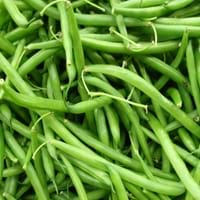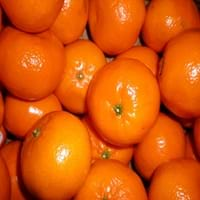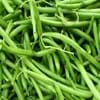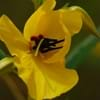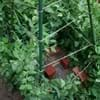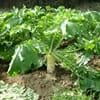Life Span
Annual
Perennial
Origin
Central America, South America
Southeastern Asia
Types
Golden Wax Bean, Romano bean
Not Available
Number of Varieties
Not Available
Habitat
Fields, orchards
Loamy soils, Well Drained
USDA Hardiness Zone
Not Available
8-11
AHS Heat Zone
Not Available
10-8
Sunset Zone
A1, A2, A3, H1, H2, 1a, 1b, 2a, 2b, 3a, 3b, 4, 5, 6, 7, 8, 9, 10, 11, 12, 13, 14, 15, 16, 17, 18, 19, 20, 21, 22, 23, 24
H1, H2, 8, 9, 12, 13, 14, 15, 16, 17, 18, 19, 20, 21, 22, 23, 24
Habit
Vining/Climbing
Oval or Rounded
Flower Color
White, Pink, Lavender
White, Red, Purple
Flower Color Modifier
Bicolor
Bicolor
Fruit Color
White, Green, Dark Red, Tan, Black
Orange Red
Leaf Color in Spring
Green, Purple, Dark Green
Green, Dark Green
Leaf Color in Summer
Green, Dark Green
Green, Dark Green
Leaf Color in Fall
Green, Dark Green
Green, Dark Green
Leaf Color in Winter
Not Available
Light Green
Leaf Shape
Maple shaped
Elliptic
Plant Season
Spring, Summer, Fall
Spring, Summer, Fall, Winter
Sunlight
Full Sun
Full Sun, Partial Sun
Type of Soil
Loam, Sand
Loam, Sand
The pH of Soil
Neutral, Alkaline
Acidic, Neutral
Soil Drainage
Well drained
Well drained
Bloom Time
Indeterminate
Spring, Late Spring
Tolerances
Drought
Drought
Where to Plant?
Container, Ground
Ground
How to Plant?
Seedlings
Cuttings, Seedlings
Plant Maintenance
Medium
Medium
Watering Requirements
Do not let dry out between waterings, Use Mulches to help prevent water loss during hot and windy weather
Average Water Needs, Do not water frequently
In Summer
Lots of watering
Lots of watering
In Spring
Moderate
Moderate
In Winter
Average Water
Average Water
Soil pH
Neutral, Alkaline
Acidic, Neutral
Soil Type
Loam, Sand
Loam, Sand
Soil Drainage Capacity
Well drained
Well drained
Sun Exposure
Full Sun
Full Sun, Partial Sun
Pruning
Remove damaged leaves, Remove dead branches, Remove dead leaves
Prune in winter, Remove damaged fruit, Remove damaged leaves, Remove dead branches, Remove dead leaves
Fertilizers
All-Purpose Liquid Fertilizer
All-Purpose Liquid Fertilizer, Apply N-P-K
Pests and Diseases
Free of serious pests and diseases
Aphids, Chlorosis, Red blotch, Scale insects, Whiteflies
Plant Tolerance
Drought
Cold climate, Drought, Dry Conditions
Flower Petal Number
Single
Single
Fragrant Bark/Stem
No
Yes
Foliage Texture
Coarse
Medium
Foliage Sheen
Matte
Glossy
Attracts
Aphids, Birds, Butterflies, Caterpillar
Birds, Butterflies
Allergy
Diarrhea, Irritation to stomach
Anaphylaxis
Aesthetic Uses
Not Used For Aesthetic Purpose
Bonsai, Borders
Beauty Benefits
Making cosmetics, Remove blemishes
Not Available
Environmental Uses
Food for animals, No fertilizer, pesticides, or herbicides needed
Air purification
Medicinal Uses
Acne, Diuretic, Emmoiliant, Menstrual Disorders
Digestion problems, Digestive disorders
Part of Plant Used
Fruits
Fruits
Other Uses
Animal Feed, Used as a nutritious food item
Used as a laxative
Used As Indoor Plant
Yes
No
Used As Outdoor Plant
Yes
Yes
Garden Design
Edible, Herb, Vegetable, Vine
Container, Edible, Feature Plant, Fruit / Fruit Tree, Hedges, Houseplant, Mixed Border, Topiary / Bonsai / Espalier
Botanical Name
PHASEOLUS vulgaris
CITRUS reticulata 'Clementine'( Mandarin Group)
Common Name
Green Beans
Clementine Mandarin, Mandarin
In German
Bohnen
Mandarin
In French
haricots
mandarin
In Spanish
Green Beans
mandarín
In Greek
φασόλια
Μανταρίνι
In Portuguese
feijões
tangerina
In Polish
fasola
Mandarynka
Phylum
Spermatophyta
Tracheophyta
Class
Magnoliopsida
Magnoliopsida
Clade
Dicotyledonous
Angiosperms, Eudicots, Rosids
Tribe
Not Available
Not Available
Subfamily
Not Available
Not Available
Number of Species
Not Available
Importance of Spring Beans and Mandarin
Want to have the most appropriate plant for your garden? You might want to know the importance of Spring Beans and Mandarin. Basically, these two plants vary in many aspects. Compare Spring Beans and Mandarin as they differ in many characteristics such as their life, care, benefits, facts, etc. Every gardener must at least have the slightest clue about the plants he wants to plant in his garden. Compare their benefits, which differ in many ways like facts and uses. The medicinal use of Spring Beans is Acne, Diuretic, Emmoiliant and Menstrual Disorders whereas of Mandarin is Digestion problems and Digestive disorders. Spring Beans has beauty benefits as follows: Making cosmetics and Remove blemishes while Mandarin has beauty benefits as follows: Making cosmetics and Remove blemishes.
Compare Facts of Spring Beans vs Mandarin
How to choose the best garden plant for your garden depending upon its facts? Here garden plant comparison will help you to solve this query. Compare the facts of Spring Beans vs Mandarin and know which one to choose. As garden plants have benefits and other uses, allergy is also a major drawback of plants for some people. Allergic reactions of Spring Beans are Diarrhea and Irritation to stomach whereas of Mandarin have Anaphylaxis respectively. Having a fruit bearing plant in your garden can be a plus point of your garden. Spring Beans has showy fruits and Mandarin has showy fruits. Also Spring Beans is not flowering and Mandarin is not flowering . You can compare Spring Beans and Mandarin facts and facts of other plants too.
